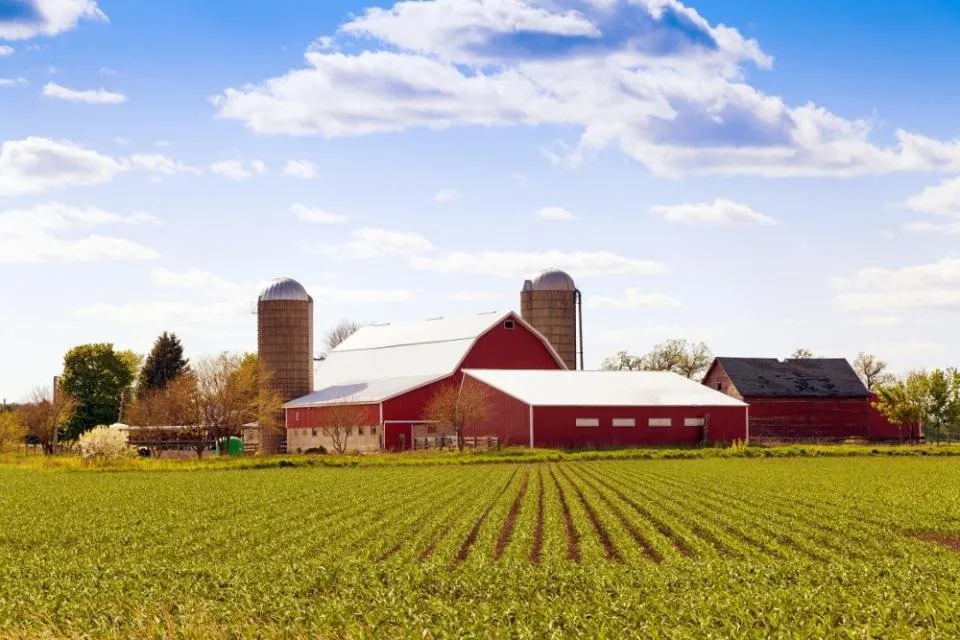If you were alive in 1790, you most likely would have made your living by farming, as 90% of the people living back then did. Fifty short years later in 1840, that number dropped to 69%. Pretty big drop, however most people were still involved in farming and learning to work their land in a productive manner. Another century later, and that number dropped to around 19%. We, as a society, became mechanized and industrialized. More opportunity awaited those who moved to the big cities, leaving their family farms behind.

Moving right along, by 1980 only 3.4% of the population contributed to the food supply, and by 1990 it slipped even further to 2.6%. Treaties such as NAFTA and GATT helped contribute to the decline of the US agricultural market, as did farm subsidies.
Miraculously, through this huge decline in farming as an occupation, we have somehow managed to keep most everyone fed over these past 200 years. However, our food supply is very precarious, and if anything were to happen to our ability to transport goods quickly, super markets would be cleaned out in a matter of minutes. Have you ever thought about what you would do to feed your family if the super market was no longer an option?

Growing Season:
Gardening is like anything else in life, you will get out of it what you choose to put into it. My wife starts things under her grow lights and in our small greenhouse, then transplants them into our garden when ready. One of the benefits of growing up on this farm is that I know the local growing season very well. This will be the first step in setting up your garden; consult with neighbors, your local extension office, and even the Farmer’s Almanac. Start things early indoors and get a jump on the growing season.

What to Plant?
Our survival garden is approximately 80’ x 90’ and we break it up into smaller sections with pathways between things so they can be easily reached for weeding and harvesting. We both have day jobs and part time jobs in addition to our farm, so we do not have to farm out of necessity, at least not yet. It does allow us to have fresh produce every day and the assurance of knowing that if anything happens we have the skill set and ability to grow our own food. Having been a prepper/survivalist minded person my entire life, I farm today not out of necessity but out of feeling the need to be prepared just in case something happens to interrupt the supply of food for my family.
I recommend planting what you like and if you have the time and space plant more that you can barter or sell as part of a home based business. We like corn, tomatoes, peppers, cucumbers, green beans, onions, potatoes, strawberries, and broccoli. We stagger our planting to allow us to have a continuous crop instead of all at the same time. For example, we plant corn rows 2 weeks apart for a 6 week spread of harvesting. Crops with very long growing spans do not lend themselves to this practice. You will have to plant everything at the same time and figure out how to can, or store, everything so you have a supply for winter.

Maximizing Available Space
You can grow crops just about anywhere there is enriched soil, water, and sunshine. If you live in an urban environment you can get window boxes to grow crops in, or if you have a small patio or balcony, these can work too.
Building elevated garden boxes takes a little bit of work, but can make gardening much easier by allowing you to work in an upright position. One of the things you need to keep mind is planting crops to take advantage of sunlight. Some crops, like corn, need full sun to develop properly. You need to follow instructions on how to plant each strain of your crops.
There are some excellent seed wheel planters available on E-bay and Amazon that allow you to properly plant your crops and they work pretty well. They are efficient and help you stay on track in your rows to maximize your available space.
If you're worried about the way things are headed and want to survive wheat's coming, then please Follow Me @survivalist.com For Daily Preparedness tips and training.
